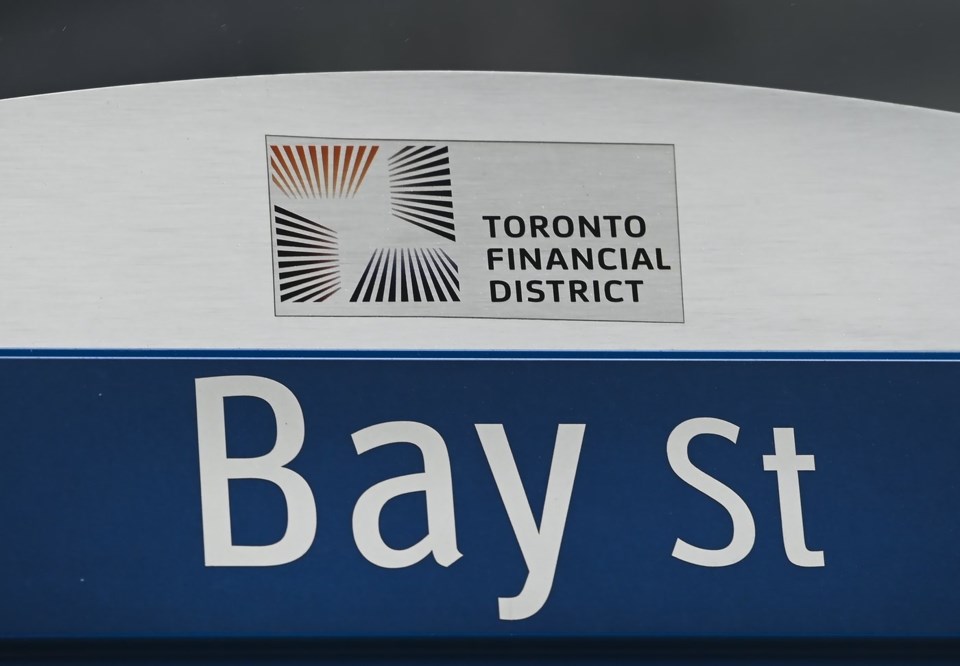TORONTO — Canada's main stock index gained more than one per cent Thursday on the back of the base metal, energy and industrial sectors, while U.S. markets also rose.
The S&P/TSX composite index closed up 263.97 points at 23,475.14.
In New York, the Dow Jones industrial average was up 235.06 points at 41,096.77. The S&P 500 index was up 41.63 points at 5,595.76, while the Nasdaq composite was up 174.14 points at 17,569.68.
Much like the day before, markets began on a lower note before staging a midday reversal, said Allan Small, senior investment adviser at iA Private Wealth.
Small said markets have been swinging in either direction largely on the movements of big tech names like Nvidia, which tend to pull the indexes in their direction as the hype over artificial intelligence continues to drive investments in that sector.
Nvidia’s share price rose 1.9 per cent Thursday to close at US$119.14.
“Every time tech gets sold off to a certain degree ... investors come back in and buy the dip,” said Small.
But markets overall have been largely rangebound as of late, said Small.
“We sell off, we go back up, we sell off, we go back up. We’re not really going anywhere,” he said.
“We’re just kind of treading water.”
However, he thinks the U.S. Federal Reserve interest rate decision next week could change that, with the central bank largely expected to cut its key rate by a quarter of a percentage point.
Though the Bank of Canada has already cut its key interest rate three times this year, the Fed has yet to do the same. The economy in the U.S. has been more resilient under higher rates than in Canada, but recent softening in the labour market has strengthened calls for the Fed to start cutting.
Though markets are still toying with the idea that the Fed could start its easing cycle with a larger cut of half a percentage point, Small said that’s unlikely.
If the Fed surprises the market with a larger cut, one of two things will happen, said Small — either the market will rally, “or it may sell off thinking that the Fed believes things are worse than they actually are.”
“So I think for everybody’s sake, it should be 25,” he said.
After Wednesday’s report on U.S. consumer inflation, a report Thursday on U.S. wholesale inflation in August came in lower than July. Another report showed an uptick in unemployment applications last week.
The Canadian dollar traded for 73.58 cents US compared with 73.59 cents US on Wednesday.
The October crude oil contract was up US$1.66 at US$68.97 per barrel and the October natural gas contract was up nine cents at US$2.36 per mmBTU.
The December gold contract was up US$38.20 at US$2,580.60 an ounce and the December copper contract was up six cents at US$4.20 a pound.
— With files from The Associated Press
This report by The Canadian Press was first published Sept. 12, 2024.
Companies in this story: (TSX:GSPTSE, TSX:CADUSD)
Rosa Saba, The Canadian Press



